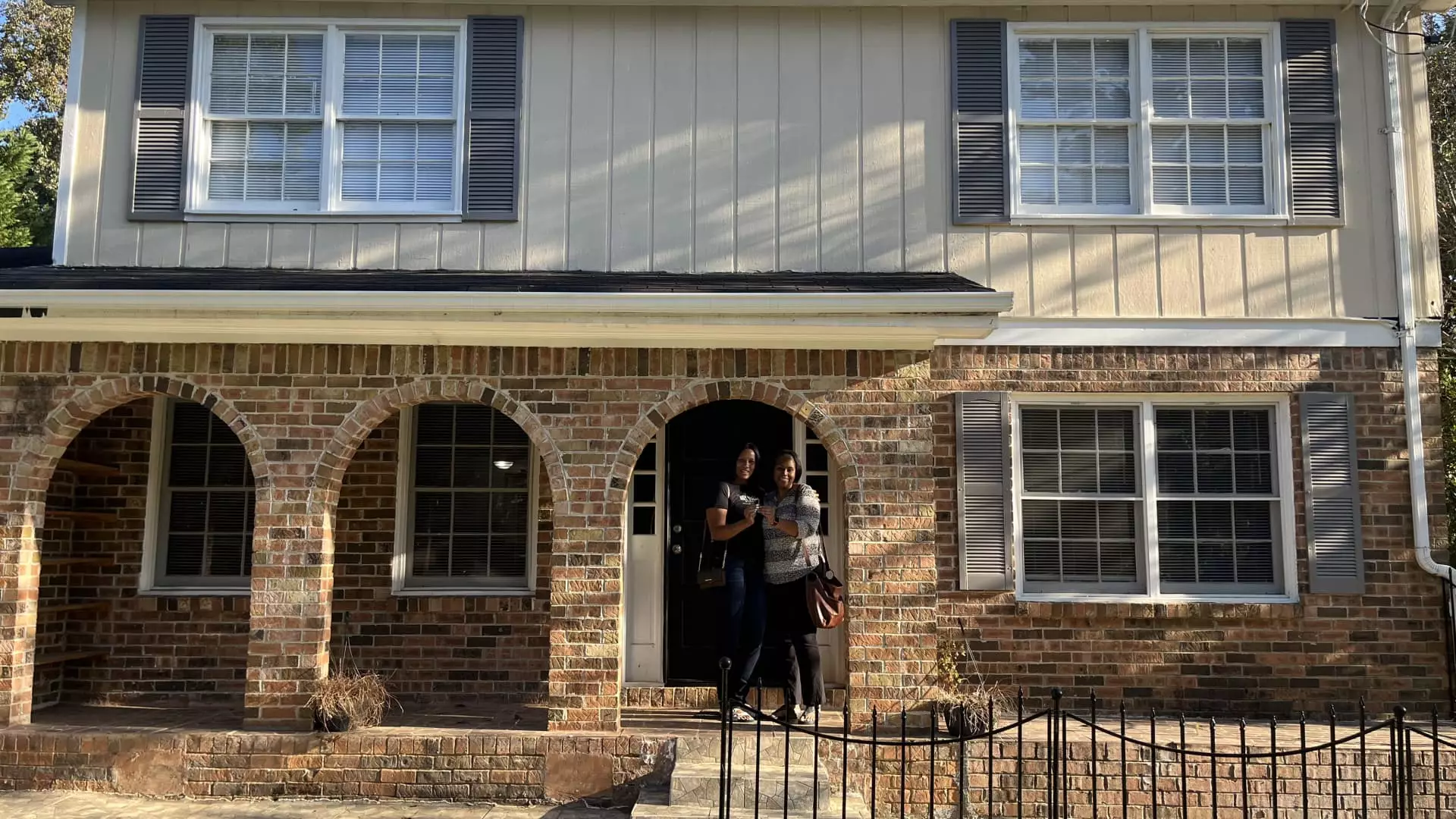In an era marked by soaring property prices, many aspiring homeowners find themselves grappling with exorbitant rents, stringent leasing requirements, and significant barriers to homeownership. A clear example of this struggle is seen in the experience of 30-year-old social worker Will Hunnicutt, who encountered the harsh reality of rental prices in Atlanta earlier this year. Faced with an income-to-rent ratio that seemed impossible to meet, Hunnicutt’s search for a reasonable apartment felt insurmountable. This predicament is a reflection of a broader issue affecting many Americans.
The American dream of owning a home increasingly appears to drift further away, especially when current statistics illuminate the disheartening truth: to afford a typical U.S. home, individuals need an annual income of $113,520, a staggering 35% higher than the average household income. Such financial demands lead to widespread frustration, making homeownership seem like a distant goal for countless individuals and families.
To address the dire situation of housing affordability, innovative initiatives like down payment assistance programs have emerged as viable pathways to homeownership. These programs are designed to alleviate the burdens of hefty down payments, which remain a significant barrier for many. As per a 2023 survey conducted by CNBC, nearly 40% of non-homeowners cited a lack of funds for down payments as a primary reason for their situation.
These assistance programs come in various forms, often targeting first-time homebuyers or those meeting specific income thresholds. They are offered by a wide range of entities—from state agencies and nonprofits to financial institutions. Importantly, these programs are equipped with conditions and requirements, such as homebuyer education courses, to ensure that participants are financially prepared for the responsibilities of homeownership.
The scale of assistance that these programs provide can range dramatically but often is quite compelling. For instance, Alternatives Federal Credit Union in Ithaca, New York, offers assistance ranging from $9,000 to $20,000, while the Chicago Housing Authority can provide similar support, allowing prospective buyers to make significant strides toward their homeownership goals.
Despite the growth of down payment assistance programs, significant systemic barriers remain, particularly for minority groups who have historically faced discrimination in housing. Nikitra Bailey, executive vice president of the National Fair Housing Alliance, emphasizes the necessity of targeting resources toward first-generation homebuyers. Many potential buyers without familial support for down payments lack access to the networks that have traditionally enabled home purchases; thus, targeted programs become essential.
The concept of first-generation homebuyer assistance serves a dual purpose—promoting equity in housing while recognizing the unique challenges faced by buyers who do not come from a background of homeownership. This focus is critical not just for individual success but for the overall health and stability of the housing market, highlighting the urgent need for comprehensive reform.
Amid the complexity of homebuying, several misconceptions perpetuate additional barriers. One notable myth is the belief that a down payment must be a daunting 20% of the home’s price. In reality, data suggests that the typical first-time homebuyer only puts down about 8%, and certain loans even allow for as little as 3.5% to 0% down payment options. However, while lower down payments can ease the initial financial burden, they often come with the caveat of private mortgage insurance (PMI), which can add another layer of cost.
As prospective buyers explore their financing options, financial advisors recommend a cautious approach, particularly regarding retirement savings. Although first-time buyers can access penalty-free withdrawals from retirement funds for home purchases, the best strategy often involves safeguarding those assets for long-term financial health.
Innovative initiatives like Roots, a real estate investment trust in Atlanta that invests security deposits back into rental properties, create pathways for renters not only to find housing but also to work toward homeownership. Such programs represent essential steps toward alleviating the crisis of home affordability, but broader systemic solutions must still be pursued.
With rising property costs and persistent financial barriers, it becomes critical for individuals and communities to gain access to reliable resources and education. By addressing systemic inequities and challenging entrenched myths about down payments, we can create a more inclusive and supportive environment for aspiring homeowners. Ultimately, the path to homeownership should not be just a dream for many; it should become an attainable reality.

